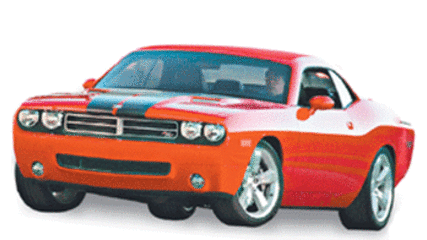Dodge American DNA
By Ashlee Pleffer · 06 Nov 2007
The year was 1999 and Dennis Ballard was begrudgingly looking through bridal magazines with his soon-to-be married daughter, doing the 'good dad thing.'Suddenly it jumped out at him; as his daughter asked his opinion on two dresses, Ballard's eyes wondered to a one-line advertisement sitting between the ladies in white; 1917 Dodge Coupe, for sale.Some would think 'what an oddly placed ad' and move on, but not Ballard, who describes himself as 'old-car mad.'Perhaps the 158 cars he has owned over the years explains his self-diagnosis. With what looked like an American phone number in the advertisement, Ballard didn't waste time, calling a friend who lived in the US to find out more.“He rang the number for me and said it was genuine, that it had been in storage from 1933 to 1998,” he says. “It turned out the publishers had the ad in the wrong book, it was meant to go in some sort of motor catalogue in the States, but that didn't happen.”Which worked out nicely for Ballard, who knew it was a special model and snapped it up on the advice of his friend, who took it for a test drive.Ballard handed over the $US4800 asking price for the car and then spent a further $2000 getting it to Australia, which took about two years, finally arriving here in 2001.Ballard's Dodge was the earliest American model on display at the 21st annual All Chrysler Day at Fairfield Showground.Even today, the 62-year-old is still thanking his lucky stars he helped out with the wedding plans.“If she hadn't been at me to look at them I wouldn't have seen it, it's just incredible luck, it's a very rare car and was in absolute top condition,” he says. Ballard has since discovered the car is the oldest known surviving Dodge Coupe, making it a very valuable piece of history.Adding to that, he is only the second owner of this very unique model. He even found the original registration slip from 1918 in the door pocket.It may look stunning from the outside, but Ballard says it's not the most pleasant vehicle to drive; “Two words, bloody hard,” he says.“It's heavy steering, very direct, there's a tendency to oversteer savagely. It's okay when you're used to it, but it's definitely a man's car.”Its driving manner wasn't something the original owner mastered either.“The original owner was a doctor and apparently had a lot of trouble handling the Dodge,” Ballard says, which he discovered from speaking to the doctor's grandson who told him he often “clobbered every pair of gate posts” and rarely used the car, preferring to get around in his horse and buggy instead.“It appears he died in 1933 and the family had no need for it so they put it in the barn and covered it up,” he says, adding that it has done less than 9000 miles (14,500km).After 68 years off the road, Ballard was surprised to discover the “wooden” coupe, with its A and B pillar made from timber, was still in reasonably good condition.The only things it needed were mudguards and a paint job. But since coming into his possession, Ballard says he's spent $15,000 getting it to its present state, with one job left; replacing the moth-eaten trim. While Ballard has a passion for old cars, he admits he has a particular soft spot for American DNA.“They do tend to stand up better to Australian conditions and they're powerful, they hold their own with today's traffic, not quite as fast but they'll stay out there,” he says. “Old Dodges in particular, they're very rugged.”Ballard's car obsession really began when his first car, a 1925 Dodge, was stolen before he was even old enough to drive it.From then on, he set out rescuing as many old cars as he could.“People were practically giving these old cars away back then, so I'd drag them home, patch them up and sell them on, it used to drive my parents mad,” the 62-year-old says.“I went mad and wanted to save them all.”While Ballard's car may be the oldest and most special car at the show, there will be variety of vehicles displaying the history of the Chrysler brand, which has included other makes over the years such as Dodge, Jeep, Hillman and Centura.A 1939 Chrysler and a 1977 Dodge Charger Imperial will be among the display of about 300 cars, with a particular focus on 50 years of 'fins.'One car fitting this theme is Frank D'agostino's 1953 Chrysler New Yorker sedan.D'agostino, who has also caught the American car bug, says he particularly loves the exaggerated shape and the size of the vehicles.“They're unique, their size, their character, the days of flamboyant looks,” he says. “But they weren't designed for economy.”










